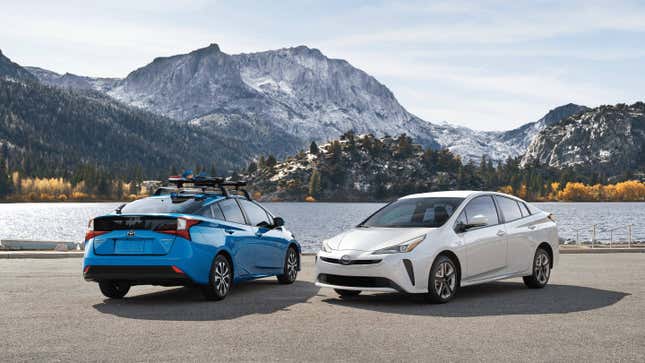
In 2019, Toyota sold a hair under 70,000 Priuses in the United States. That’s a 20% drop off of the 2018's numbers, a whopping 70% fewer than the peak in 2012 and only a few more than its debut year back in 2004. That sounds concerning, but there’s some important context to consider.
Though fewer buyers are choosing Priuses, they haven’t abandoned Toyota’s line of hybrids at all. In fact, Toyota managed a 30% increase in hybrid sales in America over 2018, with sales totals reaching more than 270,000 units. Those hybrids made up more than 13% of the brand’s total sales this past year, and the manufacturer told Automotive News that it expects that proportion to increase in 2020.
But what explains these numbers? How can sales of Toyota’s premier hybrid model be dropping so suddenly while the segment continues to expand?
It’s pretty simple really. Toyota’s hybrid technology is no longer the signal of environmentalism it once was. Buyers who are looking for extra mileage can find what they need across a wide swath of the Toyota range in a model that better fits their lifestyle and budget, and those who are looking to cultivate an image of earth-consciousness have moved on.
Sure, Toyota’s hybrid drivetrain was not a model exclusive for long. The Highlander hybrid arrived in 2005 and the Camry hybrid followed in 2006, giving buyers greater flexibility with their fuel savings. Hybrids were going mainstream and sales were predictably rising.
But despite the options, Prius sales remained strong. The car had an environmental-consciousness it-factor back then. By the time Prius sales peaked in 2012, Buzzfeed was putting together listicles of famous Prius drivers, people who could afford far more exclusive cars but chose a Prius instead for the cred it gave them. Granted, this one is sponsored content so Toyota’s thumb is was on the scale, but that only serves to reinforce the fact that Toyota knew the Prius’s value was in its brand cache.
But today things are changing. The Prius is no longer the darling of the upper-middle-class suburbs, despite attempts by Toyota to draw buyers back in with premium plug-in models and all-wheel drive. Its goofy styling and kammback shape are simply no match for two factors: the rest of the Toyota range and the Tesla Model 3.
Buyers looking for Toyota reliability and Prius fuel efficiency are turning to the Corolla and Rav4 Hybrid, as well as the other hybrid models that Toyota has introduced since the Prius was first joined by the Highlander back in 2005.
But what about those image-conscious buyers? The ones who bought Priuses because it was the car to buy at the time? In the American market, many have simply moved on to purely electric cars. Why buy a Prius and suffer a pedestrian badge up front and an internal combustion motor of any sort under the hood when a Tesla Model 3 makes the point that much better?
In the meantime, I think it’s safe to say that Toyota’s bet on the Prius more than nearly two decades ago has paid off. Though the model itself is slipping, Toyota built a hybrid empire on the quirky little hatch that has grown to a really substantial proportion of the automaker’s business. It’s certainly early to be writing any obituaries, but if the Prius should die so that hybrids can live on, I think Toyota would be just fine with that.